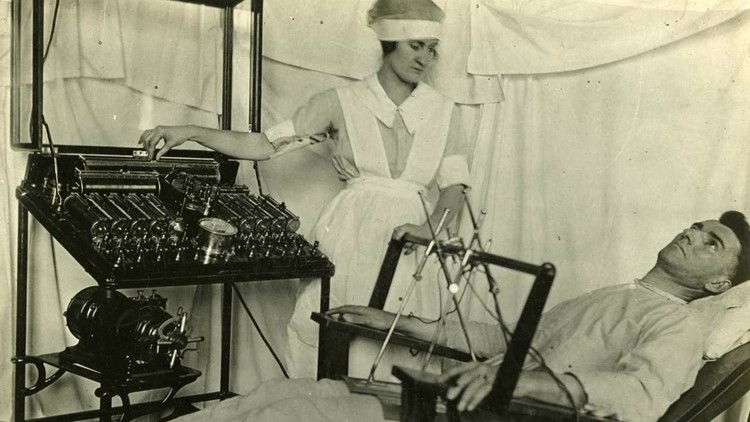In the wake of World War I, some veterans returned wounded, but not with obvious physical injuries. Instead, their symptoms were similar to those that had previously been associated with hysterical women – most commonly amnesia, or some kind of paralysis or inability to communicate with no clear physical cause. ![]()
English physician Charles Myers, who wrote the first paper on “shell-shock” in 1915, theorized that these symptoms actually did stem from a physical injury. He posited that repetitive exposure to concussive blasts caused brain trauma that resulted in this strange grouping of symptoms. But once put to the test, his hypothesis didn’t hold up. There were plenty of veterans who had not been exposed to the concussive blasts of trench warfare, for example, who were still experiencing the symptoms of shell-shock. (And certainly not all veterans who had seen this kind of battle returned with symptoms.)
We now know that what these combat veterans were facing was likely what today we call post-traumatic stress disorder, or PTSD. We are now better able to recognize it, and treatments have certainly advanced, but we still don’t have a full understanding of just what PTSD is.
The medical community and society at large are accustomed to looking for the most simple cause and cure for any given ailment. This results in a system where symptoms are discovered and cataloged and then matched with therapies that will alleviate them. Though this method works in many cases, for the past 100 years, PTSD has been resisting.
We are three scholars in the humanities who have individually studied PTSD – the framework through which people conceptualize it, the ways researchers investigate it, the therapies the medical community devises for it. Through our research, each of us has seen how the medical model alone fails to adequately account for the ever-changing nature of PTSD.
What’s been missing is a cohesive explanation of trauma that allows us to explain the various ways its symptoms have manifested over time and can differ in different people.



